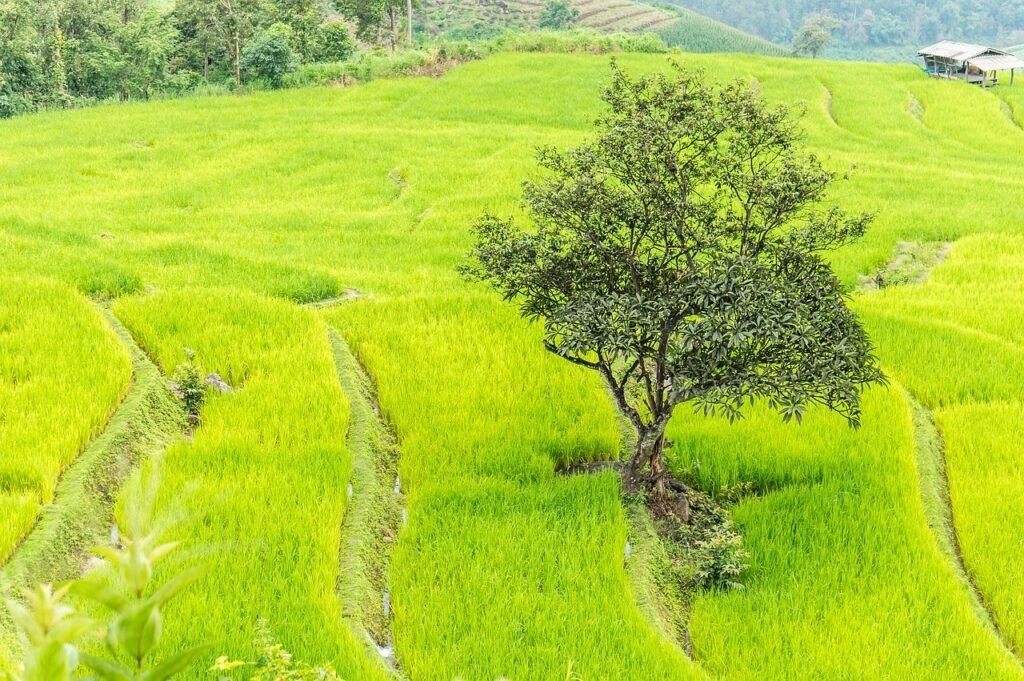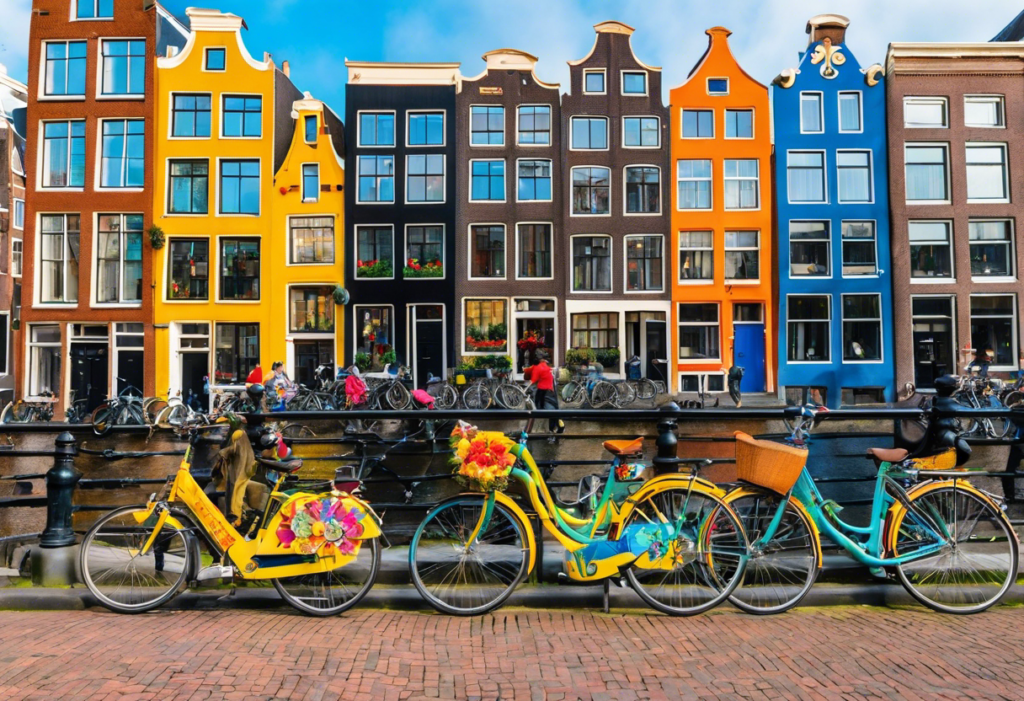Here’s an overview:
- Introduction to our 4 Days Initerary in Chiang Mai: The Heart of Northern Thailand
- Day 1: Immersing in Local Culture and History
- Exploring the Old City: Temples, Markets, and Museums
- Culinary Adventures: Sampling Street Food and Northern Delicacies
- Evening at the Night Bazaar: Shopping and Entertainment
- Day 2: Nature and Wildlife Encounters
- Elephant Sanctuaries: Ethical Visits and Interaction
- Hiking to Waterfalls: Doi Inthanon National Park
- Preparing for Your Hike
- Waterfall Trails
- Wildlife and Flora
- Cultural Insights
- Adrenaline Pump: Zip-lining Through the Jungle
- Day 3: Local Crafts and Tranquil Countryside
- Umbrella Village and Woodcarving Workshops
- Cycling Tour: Experiencing Local Life in the Countryside
- Relaxing at Hot Springs: Soaking in Serenity
- Day 4: Adventure and Exploration
- White Water Rafting on the Mae Taeng River
- ATV Expeditions in the Surrounding Hills
- Top of the Town: Visiting Doi Suthep at Sunset
- Evening Reflection: Local Dance Performance or Muay Thai Show
- Tips and Tricks for Making the Most of Your Chiang Mai Itinerary
Introduction to our 4 Days Initerary in Chiang Mai: The Heart of Northern Thailand
Chiang Mai, often considered the cultural epicenter of Northern Thailand, is a city that captivates visitors with its unique blend of history and modernity. Nestled amid forested foothills, this city is a treasure trove of ancient temples, artisan villages, and bustling markets. Chiang Mai’s significance dates back to its founding in 1296, when it served as the capital of the Lanna Kingdom. Today, it maintains an enchanting aura of times past with its moated old city and centuries-old structures that punctuate the skyline.
Despite its deep roots in tradition, Chiang Mai has embraced the present, offering contemporary amenities and attractions. This juxtaposition creates a compelling destination for travelers. The city’s setting offers a cooler climate compared to Thailand’s steamy lowlands, making it a refreshing retreat for those exploring Southeast Asia. The surrounding mountains not only provide a picturesque backdrop but also host a myriad of outdoor adventures.
The lifeblood of Chiang Mai is indeed its people. Renowned for their friendliness and hospitality, locals warmly welcome visitors, sharing their customs and cuisine. Distinctive Northern Thai dishes, vibrant festivals, and a thriving night market scene are just a few cultural highlights. Chiang Mai also serves as a bastion for traditional Thai crafts, including silk weaving, umbrella making, and jewelry manufacturing.
Moreover, Chiang Mai has become a hub for digital nomads and travelers seeking self-discovery through wellness retreats and meditation centers. Whether interested in the past or looking to embrace the present, Chiang Mai promises an immersive experience that resonates long after one’s visit.
Day 1: Immersing in Local Culture and History
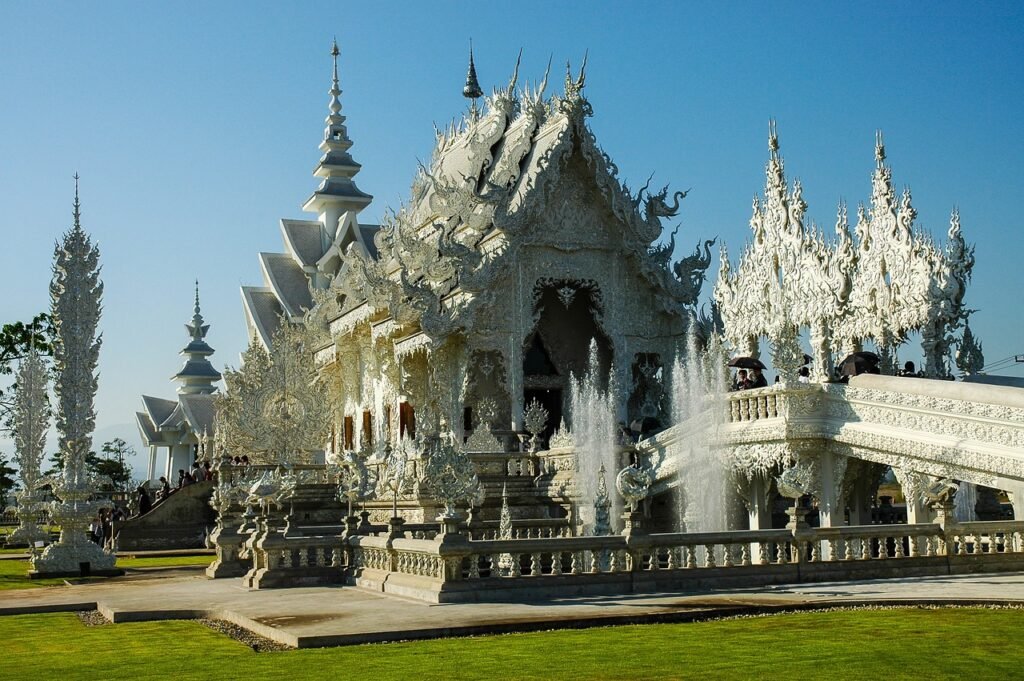
Chiang Mai, the cultural capital of northern Thailand, teems with historical significance and living traditions. Visitors seeking an authentic glimpse into its rich heritage can embark on a carefully curated journey through time and tradition.
- Wat Phra That Doi Suthep: Start the day with a visit to this 14th-century temple. Perched atop Doi Suthep Mountain, it provides panoramic views of Chiang Mai and its surroundings. Engage with the customs by offering prayers or simply marvel at the intricate Lanna architecture.
- Chiang Mai Historical Centre: Explore the old city’s square moat, capturing the essence of Chiang Mai’s former kingdom. Meander through age-old lanes flanked by moat walls and visit the Three Kings Monument, a tribute to the founders of the city.
- Lanna Folklife Museum: Situated in a colonial-style building, this museum portrays the lifestyle of the ancient Lanna Kingdom. Interactive displays and artifacts span religious practices, local crafts, and Lanna traditions, providing a deep understanding of northern Thailand’s culture.
- Warorot Market (Kad Luang): A bustling hub of commerce by day turns into a feast for the senses by night. Local vendors offer everything from textiles to spices. One can sample the colorful array of traditional Thai snacks and interact with the local community.
- Chiang Mai Cultural Performance: No cultural immersion is complete without witnessing a traditional dance. In the evening, venues across Chiang Mai showcase the elegance of Thai classical music and dance, concluding the day with a mesmerizing performance that resonates with the soul of the city.
Day 1 in Chiang Mai is an enveloping experience, weaving visitors through historical landmarks, living museums, and vibrant local life—a tapestry reflecting the city’s enduring allure.
Exploring the Old City: Temples, Markets, and Museums
Within the heart of Chiang Mai lies the Old City, an area teeming with cultural heritage and bustling activity. Surrounded by ancient walls and moats, this historic center is a treasure trove for explorers.
Visitors can immerse themselves in spirituality by visiting the myriad of temples that Chiang Mai is renowned for. Amongst these, Wat Chedi Luang stands out with its grand stupa—a testament to Lanna architecture. Another must-see temple, Wat Phra Singh, houses a revered Buddha image and is a hub during Songkran, the Thai New Year.
Strolling through markets in the Old City provides a sensory experience unlike any other. The Sunday Walking Street Market transforms Ratchadamnoen Road into a vibrant fair of local crafts, food stalls, and performers. For everyday bustle, the Warorot Market offers an authentic glimpse into the lives of Chiang Mai’s residents, with a wide selection of goods ranging from textiles to snacks.
A visit to the Old City would be incomplete without exploring its museums. The Chiang Mai City Arts & Cultural Center is a starting point to understand the region’s history and culture. For a deeper dive, the Lanna Folklife Museum showcases the traditional way of life in Northern Thailand through engaging exhibits.
- Wat Chedi Luang: Majestic stupa with historical significance.
- Wat Phra Singh: Home to a sacred Buddha image; lively during Thai festivals.
- Sunday Walking Street Market: Cultural feast of crafts, food, and entertainment.
- Warorot Market: Day-to-day market life with various local products.
- Chiang Mai City Arts & Cultural Center: Insightful overview of the region’s history.
- Lanna Folklife Museum: Exhibits on the traditional Northern Thai lifestyle.
In essence, the Old City is an essential part of Chiang Mai’s charm, offering visitors a window into the past and a taste of local flavor.
Culinary Adventures: Sampling Street Food and Northern Delicacies
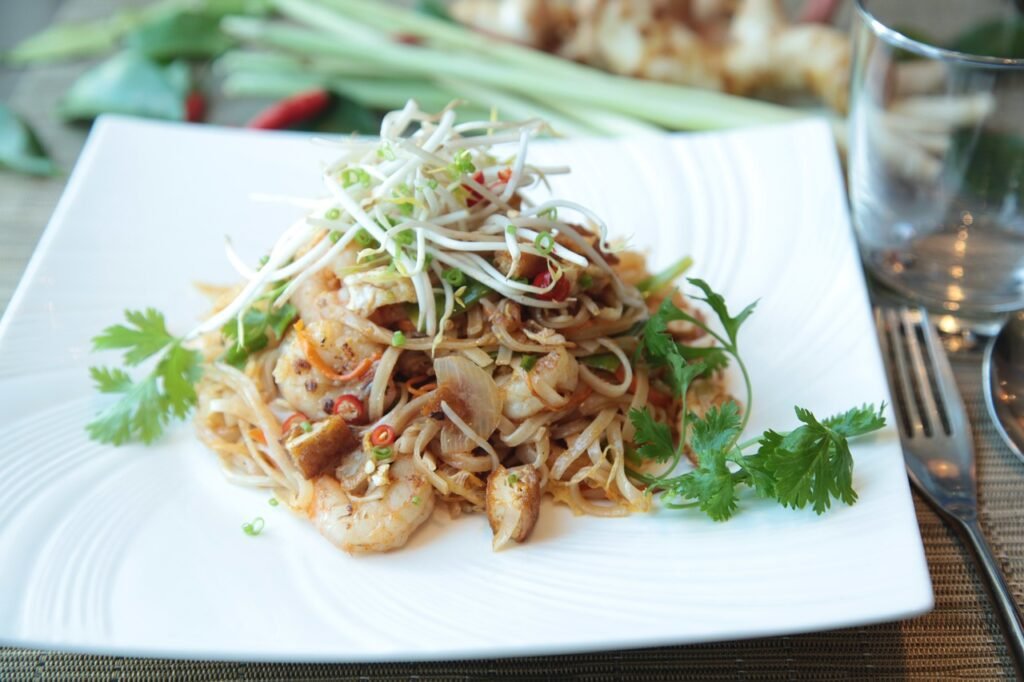
Chiang Mai, a city revered for its culinary richness, offers a gastronomic journey that is as diverse as it is flavorful. Travelers with a penchant for authentic tastes will find the street food scene in Chiang Mai to be a vibrant palette of local ingredients and traditional cooking methods. Food enthusiasts should not miss the chance to meander through bustling markets like the Chiang Mai Gate Market, where the enticing aromas wafting from the food stalls serve as an irresistible invitation to sample delicacies.
- Khao Soi – This iconic Northern Thai dish is a must-try, with its rich coconut curry broth, tender chicken or beef, and a pleasing combination of soft and crispy egg noodles.
- Sai Oua – A flavorful Northern Thai sausage, packed with herbs and spices, perfectly captures the essence of local cuisine and is widely available from street vendors.
- Mango Sticky Rice – For those with a sweet tooth, this dessert made from ripe mangoes, sticky rice, and a drizzle of coconut milk is a delightful treat synonymous with Thai street food indulgence.
Another facet of the local fare is the diverse range of snacks:
- Miang Kham – A traditional snack that allows you to wrap bits of ginger, shallots, peanuts, and more in a leaf, adding a drop of tamarind sauce for a burst of flavors.
- Insect Delicacies – Adventurous foodies can challenge their palate with an array of fried insects, which are a common snack found at many street stalls.
To fully embrace the culinary culture in Chiang Mai, travelers are encouraged to participate in a cooking class. These interactive workshops not only teach visitors how to create sumptuous Northern Thai cuisine using age-old recipes but also offer insights into the foundational elements that make Thai cuisine so unique and beloved worldwide. Through these indulgent experiences, every traveler is sure to find the flavors of Chiang Mai to be a truly unforgettable element of their journey.
Evening at the Night Bazaar: Shopping and Entertainment
An evening at Chiang Mai’s Night Bazaar is an immersion into a festive atmosphere where the vibrancy of Thai culture is palpable. As dusk falls over the city, the vibrant market awakens, with sellers setting up their stalls along Chang Klan Road, and the pulse of excitement spreads among locals and tourists alike.
- Shopping Galore: The Night Bazaar is a treasure trove for shoppers. One can find an array of items ranging from traditional Thai handicrafts to modern clothing. Handmade goods, including intricate silverware, wood carvings, and silk products, are available, offering visitors a chance to take home unique souvenirs and gifts.
- Culinary Delights: Food enthusiasts revel in the Night Bazaar’s culinary offerings. The variety is endless – from skewered meats and fresh seafood to vegetarian options and local specialties like Khao Soi. The market also has numerous restaurants and food stalls for a sit-down meal, allowing visitors to sample the local cuisine while soaking up the bustling ambiance.
- Live Entertainment: Street performers and musicians add to the vibrant mix, showcasing traditional Thai dancing and contemporary performances. The atmosphere is enlivened by the sounds of music and the sight of skilled performers, entertaining crowds as they shop and dine.
- Relaxation Spots: Amid all the excitement, massage stalls can be found, offering traditional Thai massages to weary shoppers. These stalls provide a moment of relaxation and reprieve, allowing one to rejuvenate before continuing the evening’s exploration.
The Night Bazaar operates every evening from sunset until around midnight. Visitors are advised to arrive a bit early to fully experience the transformation of the marketplace from a quiet street to a lively hub of activity. The market’s friendly vendors and the festive atmosphere ensure an enjoyable evening for all. Whether one is seeking the perfect memento, a taste of Thai food, or just a fun night out, Chiang Mai’s Night Bazaar delivers an unforgettable experience.
Day 2: Nature and Wildlife Encounters
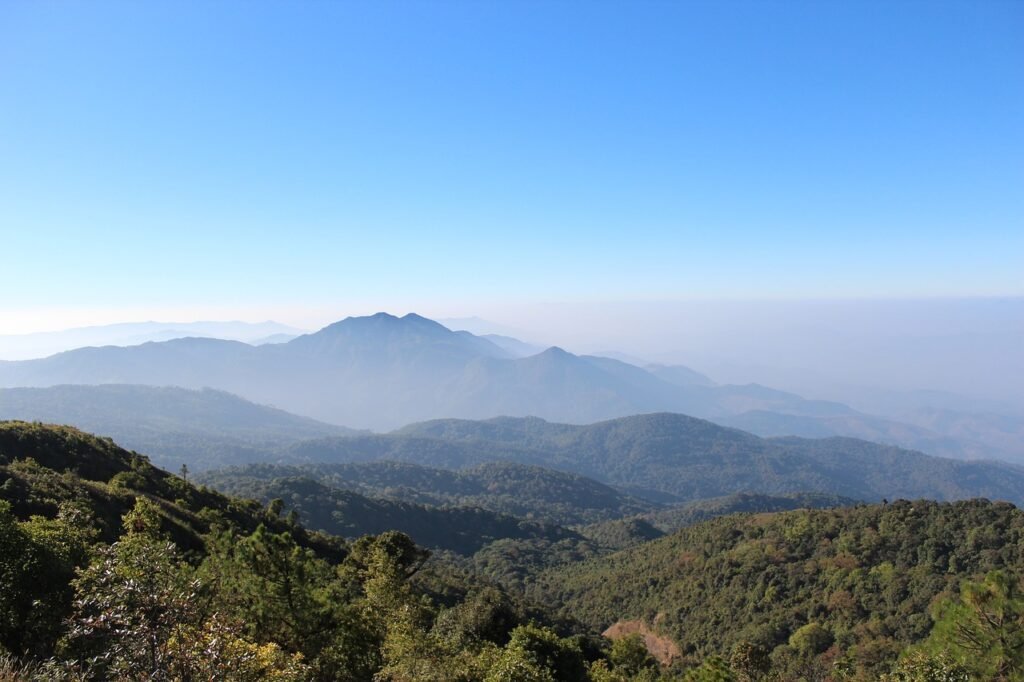
Chiang Mai’s verdant landscapes offer an abundance of nature and wildlife experiences. Early in the morning, visitors can embark on a journey to Doi Inthanon National Park, known colloquially as “The Roof of Thailand” due to hosting the country’s highest mountain. Here, one can trek through lush trails, marveling at the beautiful Mae Klang, Wachirathan, Sirithan and Mae Ya waterfalls, and perhaps even glimpse some of the park’s diverse bird species.
For a distinctive cultural and natural blend, a visit to the hill tribe villages situated in the park provides insight into the lives of indigenous people living harmoniously with the land. One should be prepared for cooler temperatures, given the park’s elevation, which provides a refreshing break from the heat of the lowlands.
In the afternoon, visitors may choose to explore the Elephant Nature Park, a sanctuary for elephants rescued from captivity. Here, one can witness the majestic creatures in a responsible and ethical setting that promotes their welfare and conservation. Engaging with elephants in this manner allows for education and awareness about the plight of Asian elephants.
Additionally, Chiang Mai offers the chance to delve into the fascinating world of insects and butterflies at the Siam Insect Zoo, where one can appreciate the biodiversity of Thailand’s invertebrates.
- Doi Inthanon National Park for hiking and waterfalls
- Cultural visit to hill tribe villages within the national park
- Elephant Nature Park for ethical elephant encounters
- Siam Insect Zoo for a closer look at Thailand’s insect species
Each activity aims to foster a deeper connection with nature and encourage conservation efforts while providing an immersive and educational wildlife experience.
Elephant Sanctuaries: Ethical Visits and Interaction
When visiting Chiang Mai, taking part in ethical elephant interactions is an experience that tugs at the heartstrings of animal lovers. As a traveler committed to ethical tourism, it’s essential to select elephant sanctuaries that put the well-being of these gentle giants first.
- Do your research – Look for sanctuaries with a strong ethical stance against riding, chaining, and other harmful practices. A good sanctuary prioritizes the health, freedom, and natural behavior of elephants.
- Engage in passive observation – The most ethical sanctuaries encourage observing elephants in their natural habitats, allowing visitors to watch as they forage, bathe, and interact with one another.
- Meaningful interaction – Some sanctuaries offer the opportunity to feed and bathe elephants under close supervision, ensuring interactions are stress-free for the animals.
- Educational experiences – Responsible sanctuaries educate visitors on the plight of Asian elephants and the importance of conservation, providing a deeper understanding and connection with these majestic creatures.
- Support ethical practices – By visiting and supporting ethical elephant sanctuaries, tourists can play a part in sustainable tourism and the fight against the exploitation of elephants.
Before your visit, inquire about the sanctuary’s rescue and rehabilitation efforts, their approach to elephant care, and the educational value they provide. By choosing to engage with elephants in an ethical and respectful manner, your visit to Chiang Mai’s elephant sanctuaries will not only leave you with unforgettable memories but will also contribute positively to the welfare of these magnificent animals.
Hiking to Waterfalls: Doi Inthanon National Park
Doi Inthanon National Park, often referred to as “The Roof of Thailand,” hosts some of the region’s most beautiful natural wonders, including its famous waterfalls. Travellers with a passion for nature should not miss the opportunity to hike through the lush landscapes of the park and witness the cascading falls up close.
Preparing for Your Hike
Before embarking on your hiking adventure, ensure you:
- Wear appropriate footwear for slippery and uneven terrain.
- Carry enough water to stay hydrated throughout the hike.
- Use insect repellent to protect against mosquitoes.
- Charge your camera or phone for capturing the scenery.
Waterfall Trails
The park offers several trails that lead to stunning waterfalls. Two of the most prominent ones are:
- Mae Ya Waterfall: One of the tallest and most magnificent falls, offering picturesque views and a serene atmosphere for picnics.
- Wachirathan Waterfall: Known for its powerful flow creating a cool mist, making it a refreshing stop along the journey.
Wildlife and Flora
Hikers might encounter various species of birds, butterflies, and even larger wildlife like gibbons. The park’s rich flora, with its orchids and rhododendrons, adds vibrant color to the lush green backdrop of the forest.
Cultural Insights
Additionally, Doi Inthanon National Park is home to the Karen and Hmong tribes, providing a glimpse into the local culture. Visiting the park’s waterfalls also presents an opportunity to learn about the importance of these natural resources to the communities living within the park.
Note: It is essential to respect the park’s rules and maintain cleanliness to preserve its natural beauty for years to come.
Adrenaline Pump: Zip-lining Through the Jungle
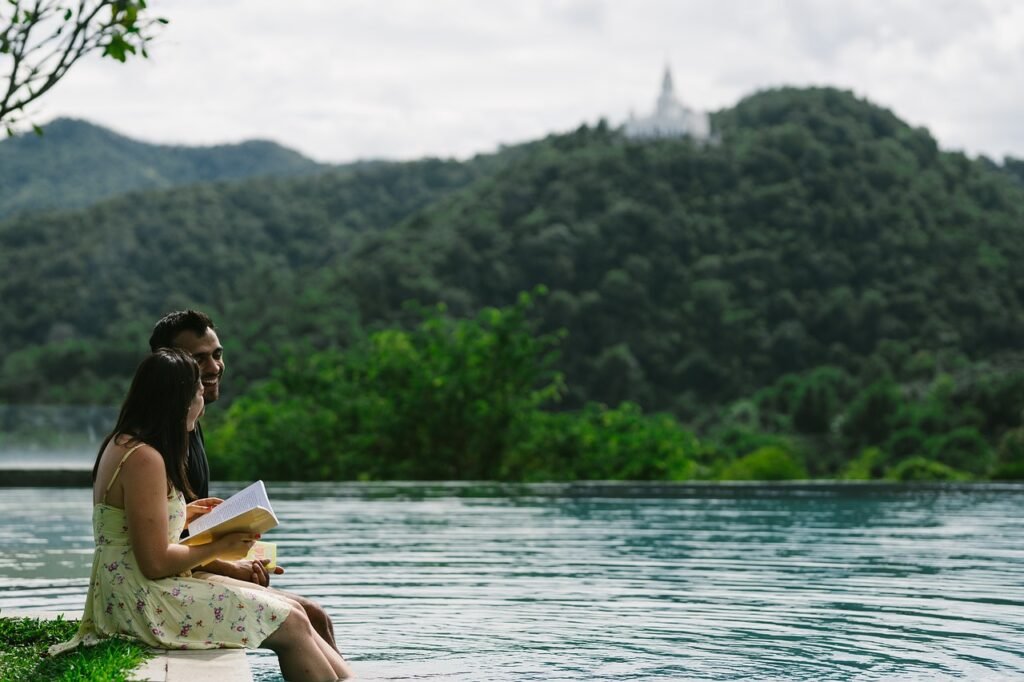
For the thrill-seekers venturing to Chiang Mai, zip-lining is an exhilarating way to explore the lush jungles from a new perspective. Gliding from tree to tree, visitors will find themselves suspended above the canopy, their hearts racing with excitement. Several reputable companies offer zip-lining adventures, each providing unique experiences:
- Flight of the Gibbon is one of the most well-known, featuring the longest single zip-line flight in Asia. With safety as a paramount concern, their courses are regularly inspected, and professional guides accompany each group.
- Eagle Track Zipline offers three different courses of varying lengths and heights, allowing participants to choose their comfort level. For additional thrills, they include sky bridges and spiral staircases amidst stunning scenery.
All zip-lining tours begin with a comprehensive safety briefing, ensuring participants are well-informed about procedures and gear. The equipment—harnesses, helmets, and gloves—is meticulously maintained, and all guides are trained in first aid and rescue techniques. The experience typically includes:
- Round-trip transportation from Chiang Mai.
- Safety equipment and comprehensive instruction.
- Multiple zip-lines varying in length and height.
- A chance to observe the area’s wildlife in its natural habitat.
- Refreshments or a meal depending on the tour length.
Beyond the thrill of the zip-line itself, these tours often provide an educational component, sharing insights into the local ecology and the importance of conservation efforts within the region. This combination of adventure, education, and stunning vistas offers an unforgettable day out for anyone looking to add some adrenaline to their Chiang Mai itinerary.
Day 3: Local Crafts and Tranquil Countryside
Immersing oneself in the local culture, day three leads you to the heart of Chiang Mai’s artisan communities. Here you can delve into the world of traditional crafts, an integral part of the region’s heritage. The day begins with a visit to the famed San Kamphaeng Road, also known as the handicraft highway. It stretches over ten kilometers and is lined with shops and factories that showcase the art of silk weaving, lacquerware, silverware, and ceramics.
- Witness Silk Production: The journey should start at a silk factory, where visitors can marvel at the intricate process of sericulture – from silkworm rearing to the final weaving of exquisite fabrics.
- Explore Pottery and Ceramics: Next on the agenda could be the village of Bo Sang, renowned for its paper umbrella-making. Watch artisans as they hand-paint delicate designs on parasols and fans. Not far from there lies the village of Celadon, where the fine art of Thai pottery can be observed, with pottery wheels spinning and kilns firing unique green-glazed ceramics.
- Learn Lacquerware and Silver: In another village, you might find skilled craftsmen creating lacquerware, an ancient technique that involves applying multiple layers of lacquer to bamboo or teak items. Jewelry aficionados would appreciate a visit to the silver-making shops, where stunning pieces of jewelry are fashioned with precision and care.
After a morning filled with craft explorations, the afternoon calls for a peaceful retreat into Chiang Mai’s serene countryside. The lush paddy fields and ripples of the Mae Sa Valley promise a picturesque setting for a leisurely bike ride or a gentle hike. Alternatively, the day can wind down with a relaxing Thai massage amidst the tranquil vistas, recharging one’s spirit for the last day of the Chiang Mai adventure.
Umbrella Village and Woodcarving Workshops

Chiang Mai’s Umbrella Village, also known as Bo Sang, is a colorful enclave known for its traditional Thai umbrellas and parasols that are brightly painted and often adorned with intricate designs. Located about 9 kilometers from the city’s center, visitors can explore the charming streets lined with shops displaying umbrellas in various stages of production—from bamboo framing to the final artful touches. The sight of rows upon rows of these vibrant umbrellas drying in the sun is a photographer’s delight and embodies part of the local craft heritage that Chiang Mai is proud to showcase.
In addition to the umbrellas, Chiang Mai is celebrated for its woodcarving expertise. The woodcarving workshops found throughout the region offer a glimpse into this ancient Thai art form. In these workshops, skilled artisans perform their craft, chiseling and shaping local woods into statues, furniture, and decorative items. Travellers can observe:
- The selection of wood, understanding the distinct properties that make teak and rosewood popular choices
- The meticulous process of carving, where each piece is shaped with precision and care
- The finishing skills applied, such as sanding, lacquering, and painting, that enhance the natural beauty of the wood
For those inspired by the artisans, several workshops conduct classes where participants can learn the basics of umbrella painting or wood carving under the watchful guidance of craft masters. These hands-on experiences provide visitors with not only a unique cultural insight but also a personalized souvenir emblematic of Chiang Mai’s rich artisanal legacy.
Cycling Tour: Experiencing Local Life in the Countryside
A cycling tour in the Chiang Mai countryside offers an intimate immersion into the local way of life, distinct from the city’s bustling streets. As cyclists pedal along quiet rural roads, they witness a tranquil world where traditional Thai customs are the fabric of everyday existence. Riders may glimpse farmers tending to their rice paddies, feel the soothing breeze of the open fields, and observe the simplicity of life that flourishes outside the city limits.
Participants on these cycling tours often encounter:
- Local Markets: Vibrant and bustling with activity, these markets are a feast for the senses. Cyclists can sample fresh local produce or exotic snacks, engaging with vendors who offer insights into their culinary traditions.
- Craft Villages: Artisans meticulously fashioning handicrafts provide a window into the region’s cultural heritage. Here, one may see the creation of pottery, silk, or paper umbrellas characteristic of the area.
- Temples: The countryside is dotted with ornate temples that serve as the spiritual centers for local communities. Visitors on bikes can easily stop to admire the intricate architecture and serene atmospheres.
- Schools: Cycling past schools provides a glimpse of the Thai education system, with uniformed children often eager to wave and greet passersby.
Each element of the tour contributes to a tapestry of experiences that showcase the authenticity of Chiang Mai’s rural culture. The slow pace of biking allows for ample time to appreciate the details, take photos, and perhaps share a moment with the locals. This eco-friendly mode of exploration also ensures a minimal environmental footprint, preserving the natural beauty and purity of the countryside for future generations.
Relaxing at Hot Springs: Soaking in Serenity

For those yearning for tranquility amidst Chiang Mai’s adventures, the hot springs offer a rejuvenating escape. Nestled in the lush landscapes surrounding this northern oasis, you’ll find several natural hot springs—the perfect antidote to the wear of travel.
Visitors have the choice between the well-known San Kamphaeng Hot Springs, a public favorite characterized by its geothermal pools and an inviting park, and the more secluded springs that often become the hidden jewels for those seeking a quieter experience:
- San Kamphaeng Hot Springs: With options ranging from public pools to private mineral tubs, travelers can enjoy therapeutic relaxation surrounded by well-manicured gardens.
- Fang Hot Springs: These springs are part of the Doi Pha Hom Pok National Park and offer a closer encounter with nature, featuring hot and cold pools set against a backdrop of the park’s stunning vistas.
While indulging in the soothing waters, visitors are encouraged to partake in other activities available at the hot springs:
- Mineral baths: Select locations provide personal mineral tubs, allowing a private soak with temperature control.
- Egg boiling: Some hot springs offer the unique experience of cooking eggs in the naturally heated waters—a fun and memorable activity for visitors.
During this serene sojourn, travelers often uncover a sense of inner peace while the mineral-rich waters work to alleviate any lingering tension. Balancing both serenity and health benefits, time spent at Chiang Mai’s hot springs is an idyllic interlude within a dynamic four-day itinerary. Whether it’s a pause from sightseeing or an intentional healing retreat, these waters offer a restorative respite, ensuring visitors leave feeling refreshed and ready for continued exploration.
Day 4: Adventure and Exploration
Chiang Mai offers a thrilling array of adventure and exploration opportunities that immerse visitors in the natural beauty and cultural richness of the region. On the fourth day, travelers should consider venturing beyond the city limits to experience the lush landscapes and exhilarating activities available. Here’s how adventurers can spend their final day:
- Begin the day with a visit to Doi Inthanon National Park, renowned as the “roof of Thailand.” Here, travelers can marvel at the highest peak in the country. Early morning visits reward guests with breathtaking views and the chance to see sunrise amidst the mist-shrouded mountains.
- Embark on a trekking excursion through the park’s trails, which wind through verdant forests, past stunning waterfalls like Wachirathan and Mae Pan, and flowery meadows. Keen birdwatchers can spot a variety of indigenous species, adding a serene element to the hiking experience.
- After the hike, head to the Karen Hill Tribe Village. This cultural foray offers insight into the lifestyles and traditions of one of Thailand’s ethnic groups. Visitors can interact with local artisans, observe their unique weaving patterns, and purchase handicrafts as souvenirs.
- Thrill-seekers should not miss the opportunity to go ziplining at the Flight of the Gibbon or Skyline Adventure. These experiences provide a unique perspective of the forest canopy and the thrill of gliding over lush treetops.
- Conclude the adventure-filled day with a relaxing soak at the San Kamphaeng Hot Springs. The natural mineral waters here are believed to have healing properties and offer a serene way to unwind after the day’s exertions.
On this final day, travelers push their boundaries and fully embrace the spirit of adventure that Chiang Mai fosters. The combination of natural wonders, cultural immersion, and adrenaline-pumping activities ensures that the journey to this enchanting city leaves a lasting impression.
White Water Rafting on the Mae Taeng River
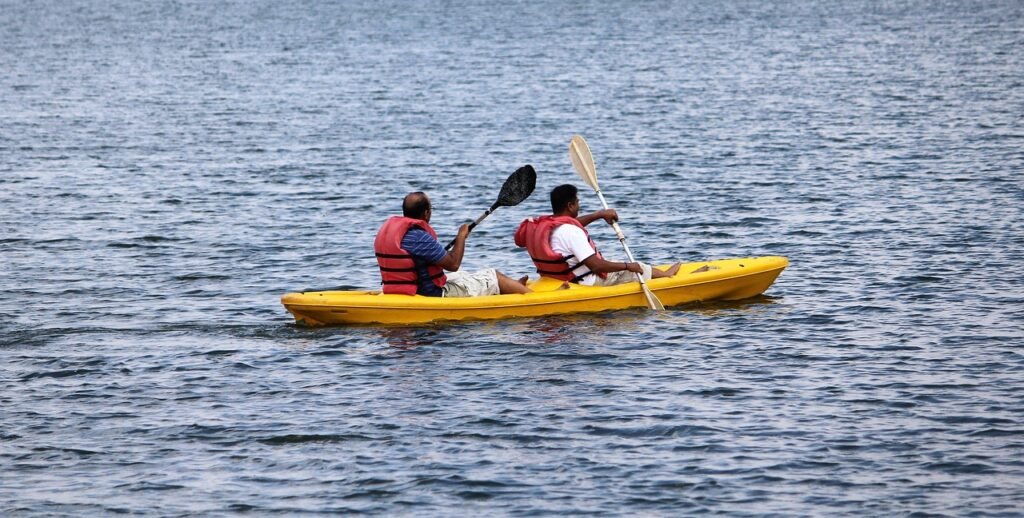
Nestled amidst the verdant landscapes of Chiang Mai, the Mae Taeng River serves as a premier destination for adrenaline-seekers looking to tackle the exhilarating sport of white water rafting. This activity appeals to both novices and experienced rafters by offering a variety of rapids that range from gentle waves to challenging class IV torrents. The journey along the Mae Taeng provides not only thrills but also the opportunity to witness the abundant beauty of Northern Thailand’s wilderness.
Participants should expect a thorough safety briefing conducted by certified instructors before embarking on their aquatic adventure. Equipped with life jackets, helmets, and paddles, they will board specialized rafts crafted to navigate the river’s capricious waters.
The rafting expedition typically unfolds over a 10-kilometer stretch, allowing adventurers to experience the river’s full spectrum of dynamics. Along the way, they will encounter moments of serene calm punctuated by heart-pumping rapids that demand teamwork and determination to conquer.
A standard rafting itinerary might comprise the following elements:
- A morning pickup from one’s accommodation in Chiang Mai
- An orientation and safety instruction session upon arrival at the Mae Taeng River base camp
- Approximately two to three hours of rafting, depending on water levels and weather conditions
- A riverside lunch featuring local Thai cuisine for refueling post-adventure
- Transportation back to Chiang Mai, leaving participants with ample time to reflect on their exhilarating experience
Engaging in white water rafting on the Mae Taeng River not only provides an unforgettable day full of splashes and laughter but also cultivates a deeper appreciation for the natural beauty and spirit of adventure that embodies Chiang Mai’s great outdoors.
ATV Expeditions in the Surrounding Hills
For the adventurous souls visiting Chiang Mai, taking an all-terrain vehicle (ATV) expedition through the surrounding hills offers an exhilarating way to explore the rugged landscapes. A typical ATV tour begins with a safety briefing and basic training, ensuring participants are well-prepared for the journey ahead.
Tours vary in difficulty and length, but most dig deep into the heart of the countryside, showcasing the region’s natural beauty. Riders can expect:
- Guided Trails: Professional guides lead the way through dense forests, across rivers, and up mountainous terrains, unveiling panoramic views and hidden spots only accessible by off-road vehicles.
- Cultural Encounters: Some routes pass through local hill tribe villages, granting a rare glimpse into the traditional lives of the Hmong, Karen, and other ethnic groups that inhabit the Northern Thai highlands.
- Flora and Fauna: As participants traverse different elevations, they’ll encounter a variety of plant life and the chance to spot wildlife in its natural habitat.
- Tailored Rides: Whether you’re a beginner or an experienced rider, tour operators cater to all skill levels, with options to extend rides for those seeking an extra thrill.
- Safety Gear: Helmets, gloves, and protective eyewear are typically provided, ensuring a safe experience without compromising on the rush of adventure.
Tour durations range from a few hours to a full day, and most companies will include refreshments or a meal, making it a comprehensive excursion. Participants should wear comfortable clothing, closed-toe shoes, and be prepared for mud, dust, and the elements. With the wind in your hair and the pulse of the engine beneath you, an ATV expedition offers an unparalleled way to engage with the landscape and experience the rugged charm of Chiang Mai’s hills.
Top of the Town: Visiting Doi Suthep at Sunset
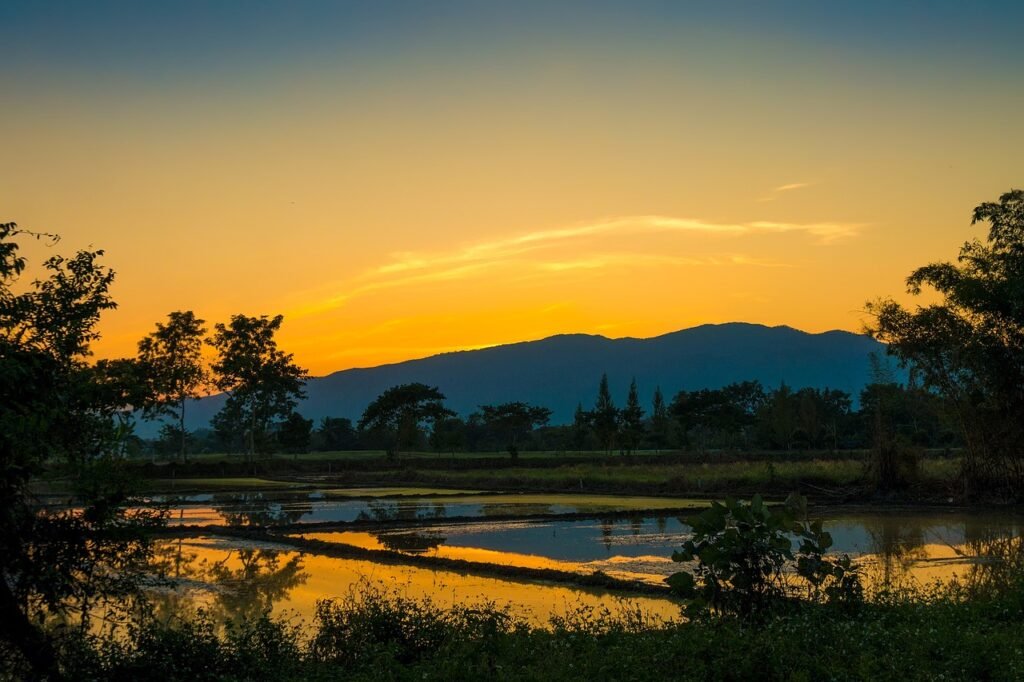
As the daylight begins to wane, visitors in Chiang Mai set their sights on one of the most sacred and picturesque locations in the region—Doi Suthep. Serendipitously perched atop a mountain, Wat Phra That Doi Suthep temple serves not only as a spiritual hub but also as a vantage point offering one of the most stunning sunset views in all of Thailand.
To ensure an optimal experience, travelers should aim to arrive at Doi Suthep an hour before the sun starts to set. This allows for ample time to ascend the 309-step naga-flanked staircase or to take the convenient cable car up to the temple grounds. Once at the top, visitors are greeted with the golden hues of the chedi—the centerpiece of the temple complex, adorned with impressive dragon sculptures, and intricately detailed mosaics.
As the sun begins its descent, the sky is a canvas streaked with vibrant oranges, pinks, and purples. The panoramic vista stretches across the verdant forest canopy to the city of Chiang Mai below, offering a perfect backdrop for photography enthusiasts.
- Preparation: Bring a camera and arrive early to find the best spot for sunset views.
- Cultural Significance: Engage with the spiritual significance of the temple by observing the evening ceremonies and rituals.
- Etiquette: Dress respectfully and remove shoes when entering temple buildings.
- Refreshments: Enjoy local snacks from the nearby vendors, but remember to keep the area clean.
The transformative experience of Doi Suthep at sunset transcends a mere tourist attraction. It encapsulates the beauty of Northern Thailand, providing visitors with a moment of reflection and tranquility that will last long after the journey has ended.
Evening Reflection: Local Dance Performance or Muay Thai Show
As visitors wander through the bustling streets of Chiang Mai, they’re often faced with a choice of cultural evening entertainment. A local dance performance, such as those held at the Chiang Mai Cultural Center, offers an intimate encounter with Northern Thailand’s rich heritage. Graceful dancers, adorned in vibrant costumes, bring to life traditional stories and folklore through their intricate movements, accompanied by soothing Thai classical music.
Alternatively, those seeking an adrenaline rush may opt for the raw excitement of a Muay Thai show. Chiang Mai’s boxing stadiums, like the Thapae Boxing Stadium, serve as arenas where the ancient martial art of Muay Thai unfolds. Here, spectators can watch with bated breath as athletes display a blend of strength, agility, and the revered eight-limb technique that characterizes the sport. Auditory senses are heightened by the rhythm of the ringside musicians, who play traditional sarama music to motivate fighters and entertain the crowd.
Both choices encapsulate the essence of Thai culture, but from different perspectives. The dance performance is a serene homage to the artistic legacy of the region, while the Muay Thai show pulsates with the competitive spirit and physical prowess that is deeply woven into the Thai way of life. Engaging with either will offer visitors a profound sense of connection to the heart and soul of Chiang Mai, leaving them with memories to be cherished as their journey through the city continues. Whether seeking elegance or excitement, an evening reflection through these cultural showcases promises to be a highlight of any traveler’s itinerary in Chiang Mai.
Tips and Tricks for Making the Most of Your Chiang Mai Itinerary
When planning a trip to Chiang Mai, it’s essential to strategize to optimize your four-day journey. Here are some tips to help you maximize your experience:
- Prioritize Your Interests: List out the activities and sites that align with your interests. If you’re a culture enthusiast, allocate more time to temples and museums. Nature lovers should consider prioritizing national parks and outdoor adventures.
- Early Starts: Many attractions in Chiang Mai are less crowded in the morning. Plan to visit popular spots like Doi Suthep or the Elephant Nature Park early to enjoy them before the crowds set in.
- Plan Logistically: Group activities and sites that are in the same area to save time on commuting. Old City landmarks can be toured together, whereas day trips like the Flight of the Gibbon or visits to Doi Inthanon should be allocated their own day.
- Alternate Relaxation and Activities: Chiang Mai’s appeal lies in both its bustling markets and its serene wellness retreats. Alternate days of sightseeing with relaxing activities such as a traditional Thai massage or a yoga class to recharge.
- Local Sim Card: Consider getting a local SIM card for easier navigation and communication. This will help in getting around and making any last-minute bookings or changes to your itinerary.
- Seasonal Considerations: Be aware of the local weather and air quality, especially during the burning season (March to April). Plan indoor activities if air quality is poor and always have a flexible itinerary that can adapt to weather conditions.
- Transportation: Familiarize yourself with local transport options like songthaews, tuk-tuks, and Grab. Decide on the most convenient way for your group to travel, and consider renting a scooter if you’re confident in navigating local traffic.
- Night Markets: Don’t miss the night markets for souvenirs and street food. They are an excellent way for visitors to interact with locals and experience the city’s vibrant nightlife.
By thoughtfully considering these aspects, travelers can create a Chiang Mai itinerary that is both enriching and efficient, ensuring a memorable four-day adventure in this beautiful Thai city.
Exploring Chiang Mai for 4 days? Enhance your trip by checking out our insights on the safety of Chiang Mai, Thailand. Our guide offers valuable tips and information, ensuring you have a secure and enjoyable experience in this beautiful city known for its rich culture and stunning landscapes. Perfect for travelers seeking peace of mind during their adventure. Discover more at Is Chiang Mai, Thailand Safe? on Travimply.

